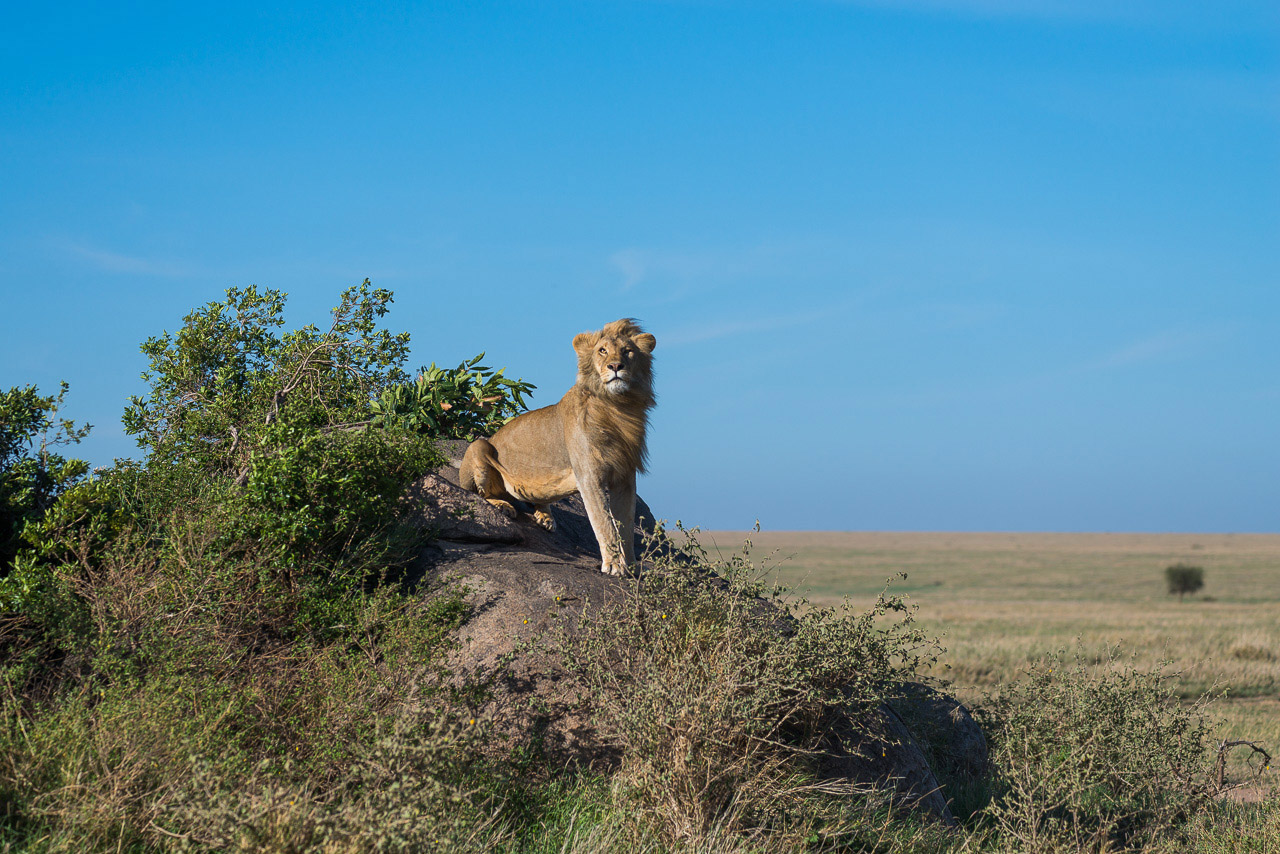


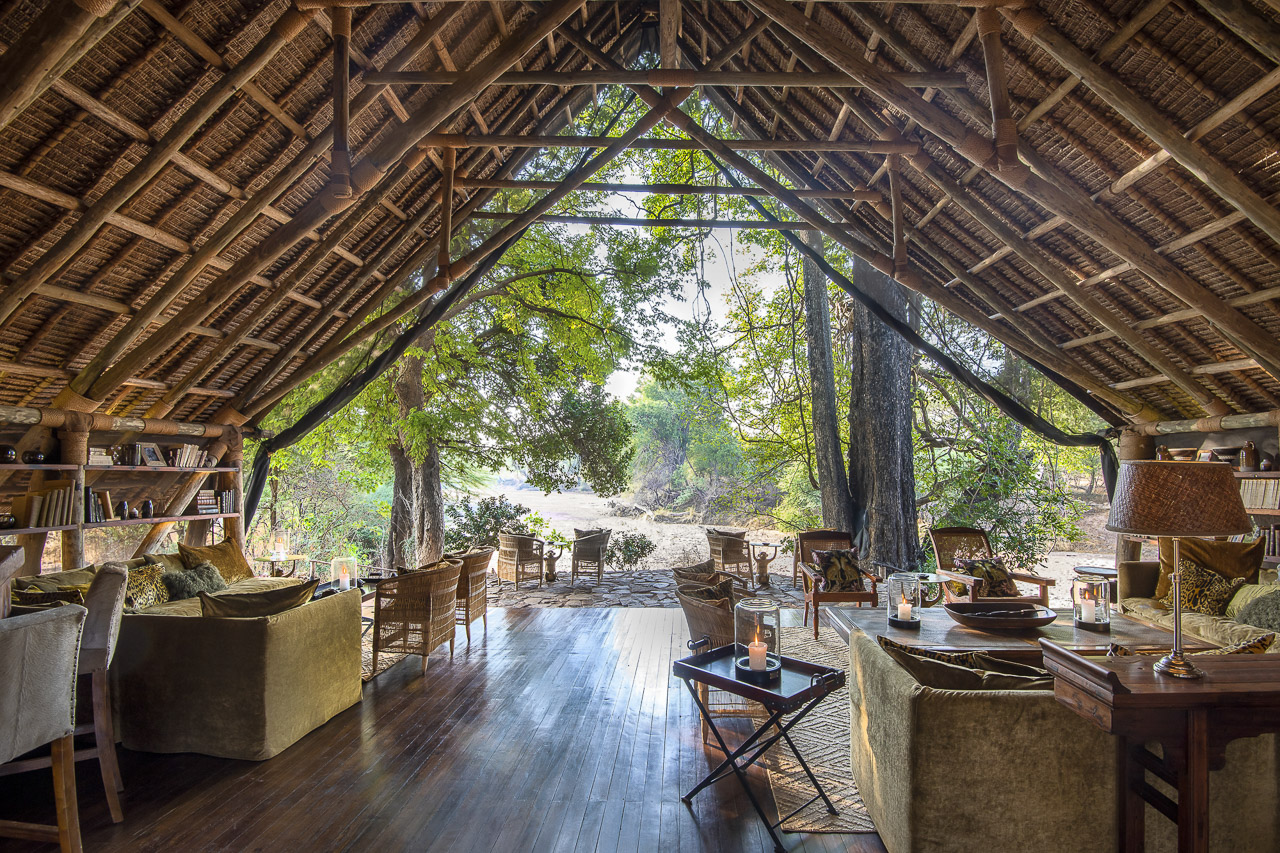
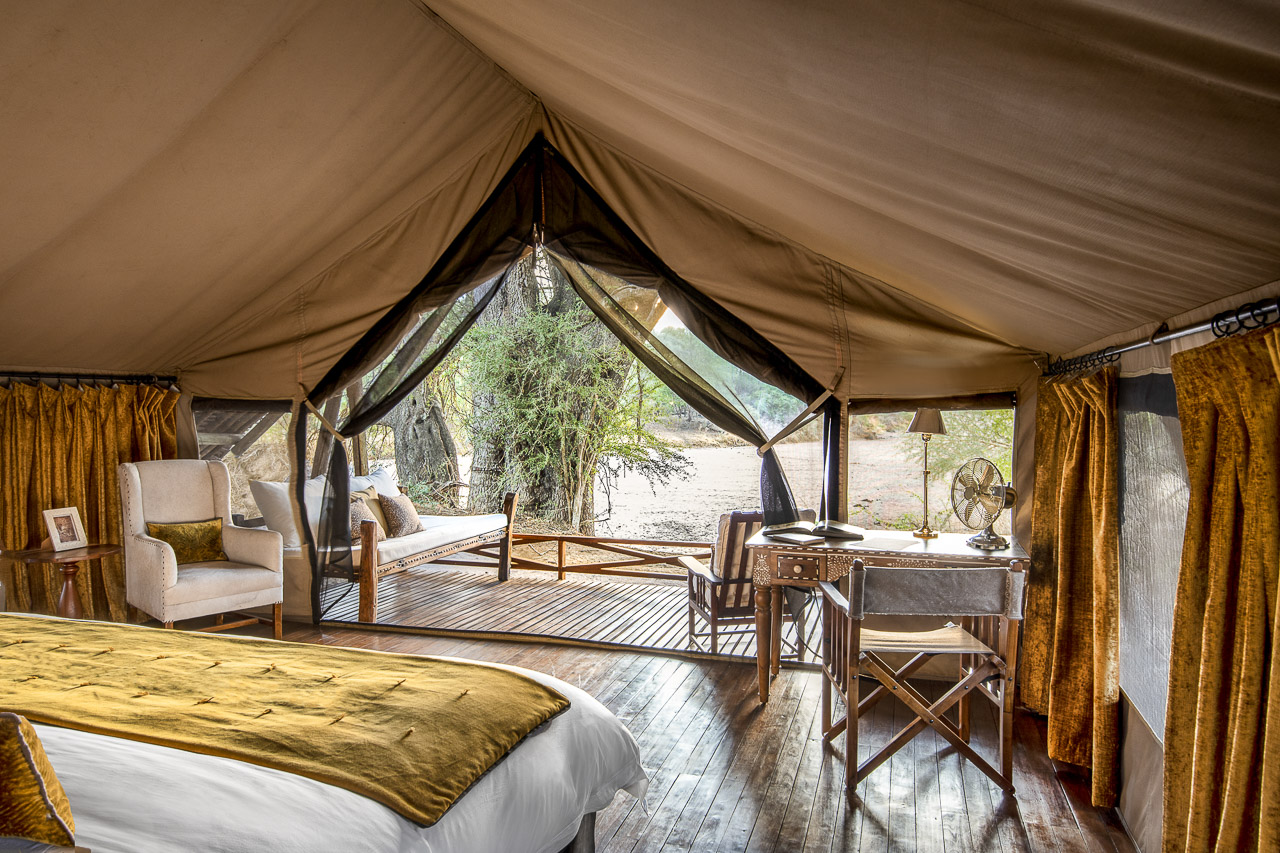
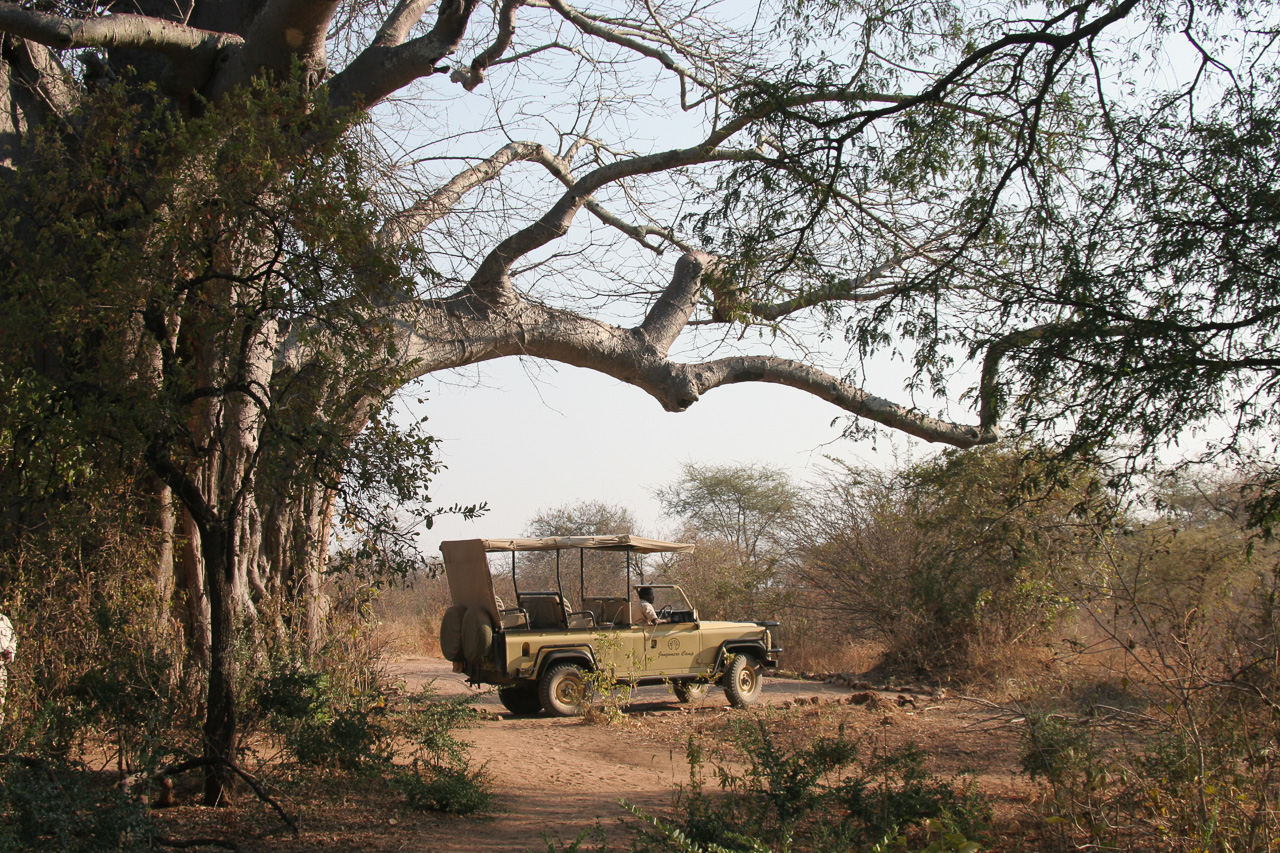
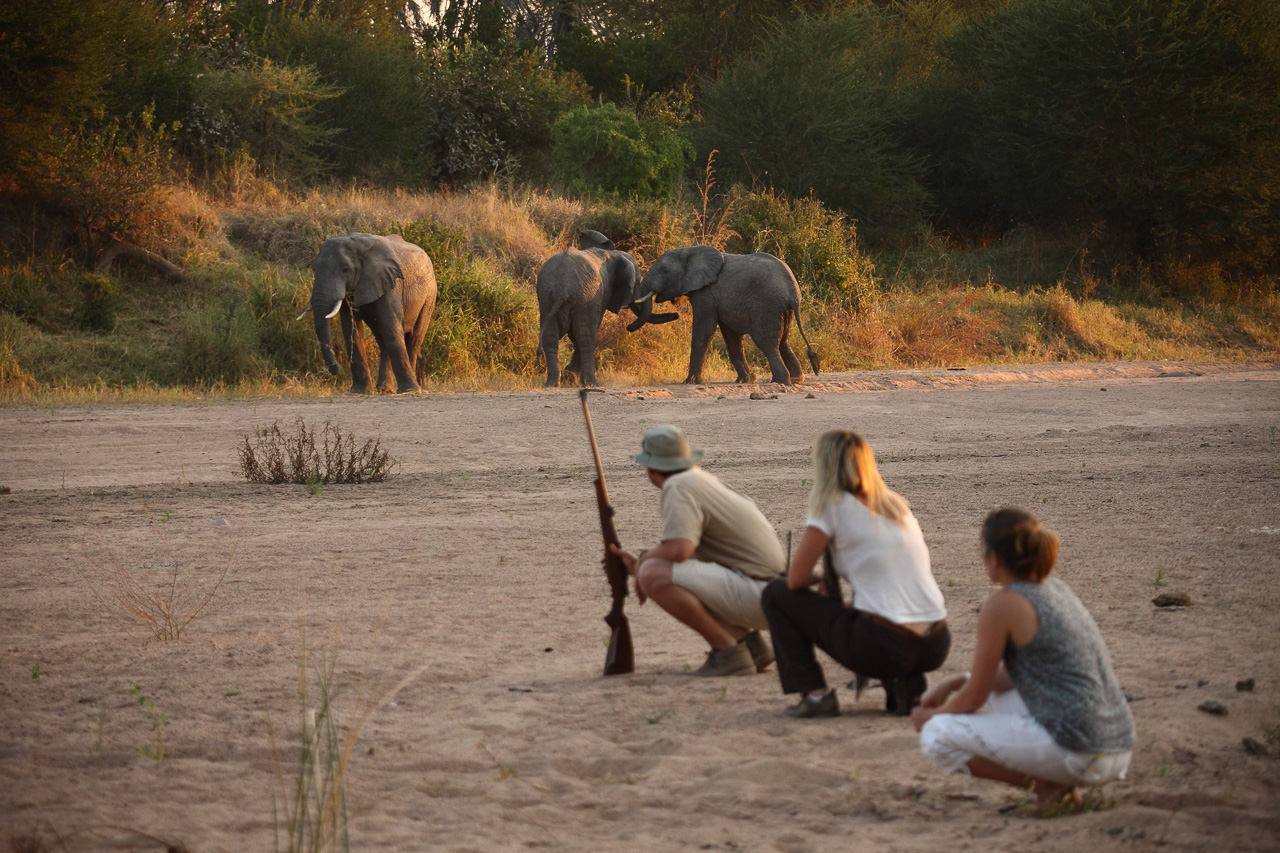
Accommodation
Jongomero Camp is a beautiful camp situated in the Ruaha National Park. Stretching along the Jongomero River, it offers eight stylish, thatched tents raised atop platforms. Often the river is just a dry sand bed, but it can fill with water following rainfall. The en-suite bathrooms with open-air showers and double basins are very spacious. The large veranda offers guests the opportunity to simply relax and enjoy the views across the riverbed - it is also the perfect place to take morning coffee or lounge on the Zanzibar bed with a book.
The open-plan lounge/bar and dining room comprise two separate units joined by a short wooden walkway. Dinner is often served under the stars on a mezzanine platform built close to the river.
Life in Jongomero is relatively relaxed. Game drives usually begin around 08:00 when the animals congregate at the river. Those who prefer to stay at camp can relax in the only pool in Ruaha National Park and enjoy the water's cooling effect on those sizzling days during the hot months.
Families and friends may want to consider the Jongomero Manor
The park is accessed via air from Arusha or Dar Es Salaam and can be seamlessly combined with a visit to Nyerere National Park. The flight to Nyerere National Park takes approx. 1 hr 30 mins; the flight to Dar Es Salaam or Arusha, including all stops en-route, takes approx. 2.5 hrs.
Jongomero has its own airstrip. The drive from here to camp takes just several minutes. Jongomero Camp is situated on the very edge of the Jongomero River, which later becomes the Great Ruaha River, in the western part of Ruaha National Park.
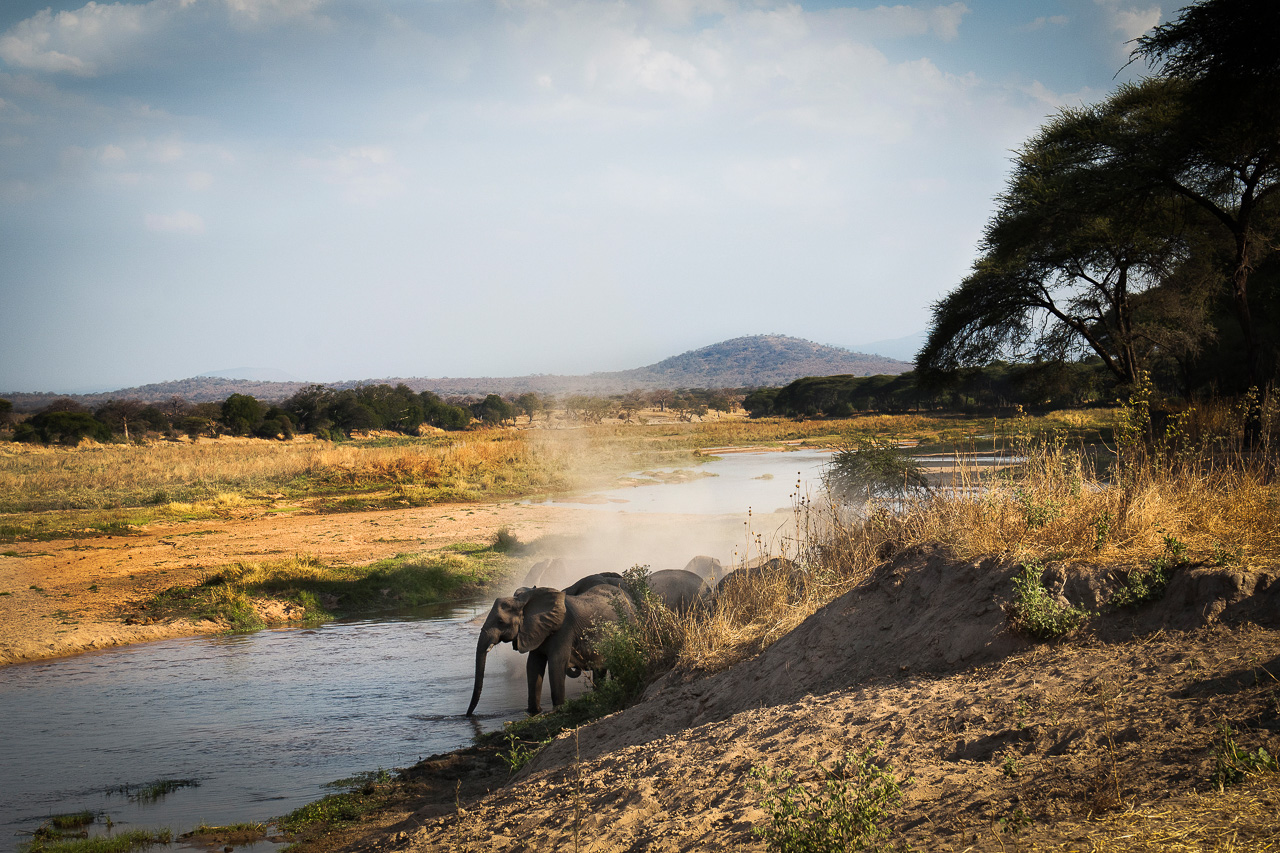
The park expanded in 2008 to include the Usanga Wetlands, and in addition to its 40% miombo forest, also boasts open savannahs, beautiful baobab, acacia and palm forests, as well as several springs, marshes and seasonal flood plains. The park borders on the Mzumbe River to the north and the Great Ruaha River to the south. The Usungu Game Reserve and three further reserves surround the park almost entirely.
Most of the camps are situated at a height of between 800 – 1000 m above sea level, the highest point in the park, however, is a respectable 1868 m. A 50 – 100 m high escarpment is a reminder that the Ruaha National Park is part of the Great Rift Valley. Most camps offer game drives in open 4x4 vehicles and bush walking.
The good camps are located in the park itself, most of them in the eastern part where there is more open flatland and game viewing is usually easier. The western part of the park is heavily forested and home to the tsetse fly, which can sometimes be a problem, but it is quieter here because the main entrance and the rangers’ headquarters are situated in the eastern part.
Ruaha is easy to combine with a visit to the Nyerere National Park, which is a one hours’ flight away; Dar es Salaam is a two hours’ flight away. Guests can fly the big loop from Ruaha and visit Katavi as their next stop. Best time to travel is from June to October.


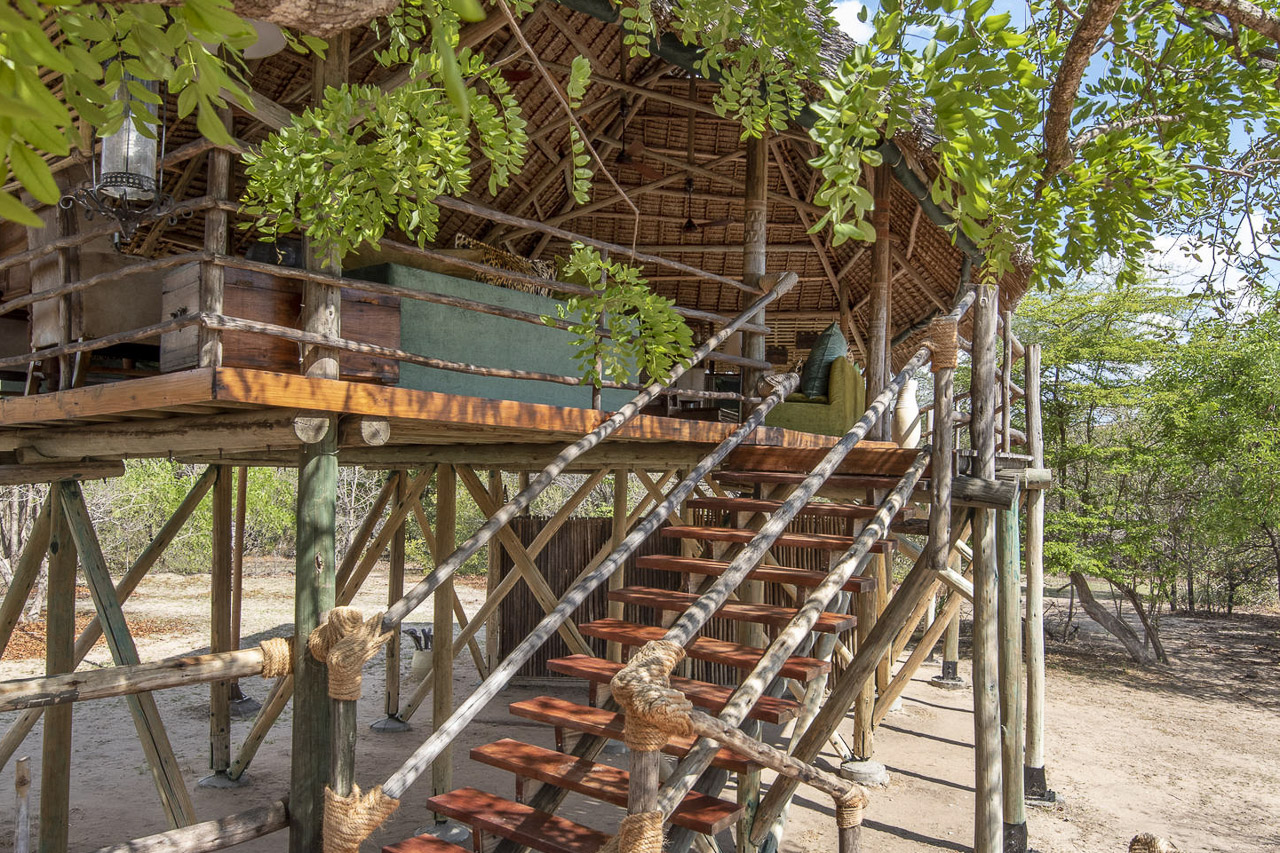
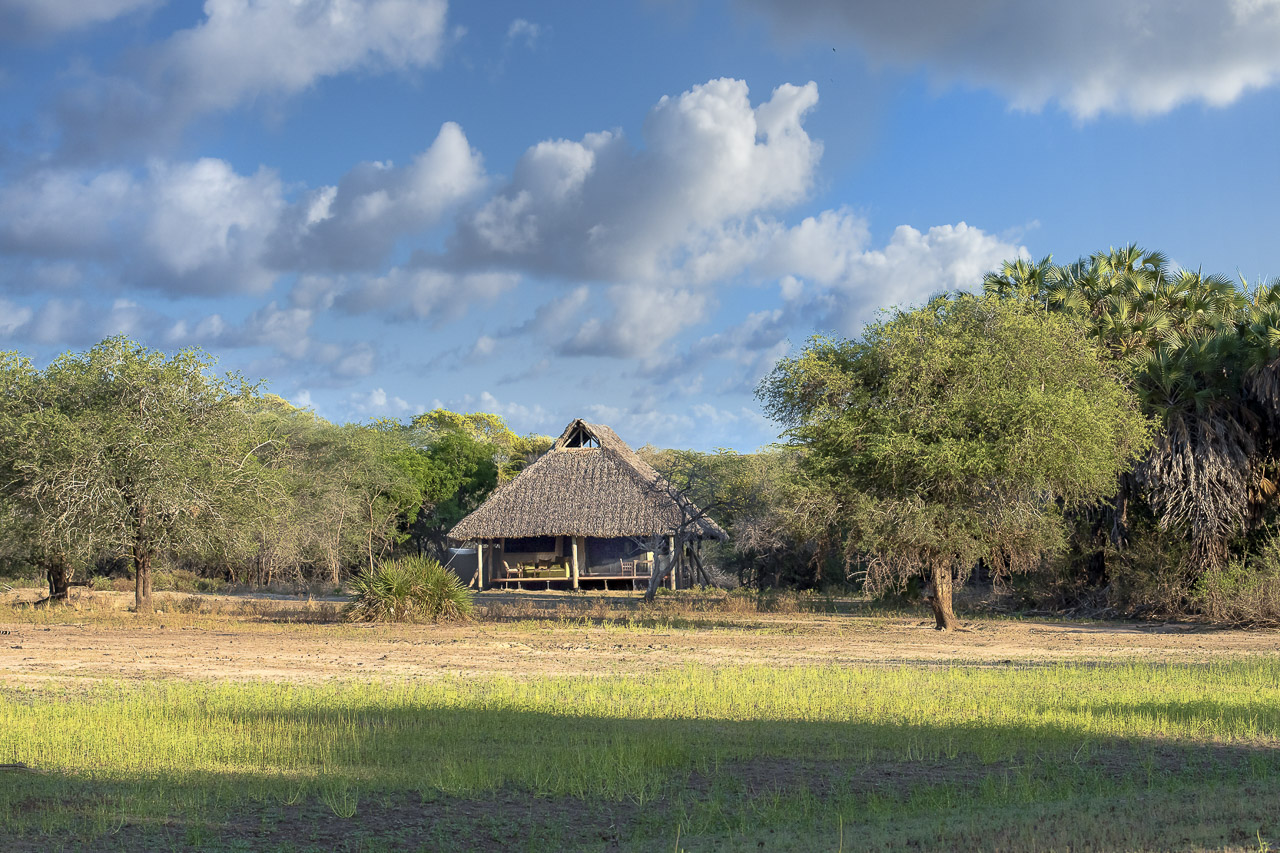
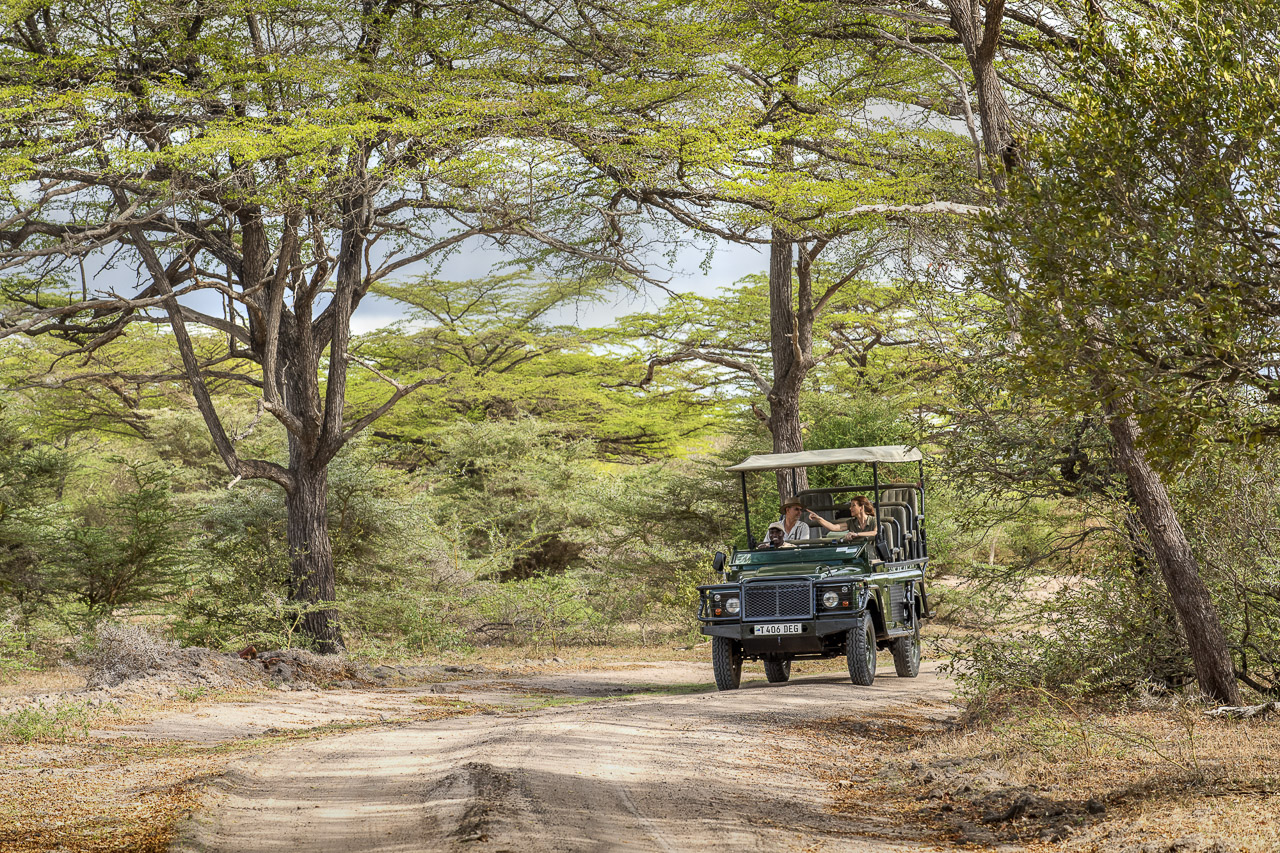
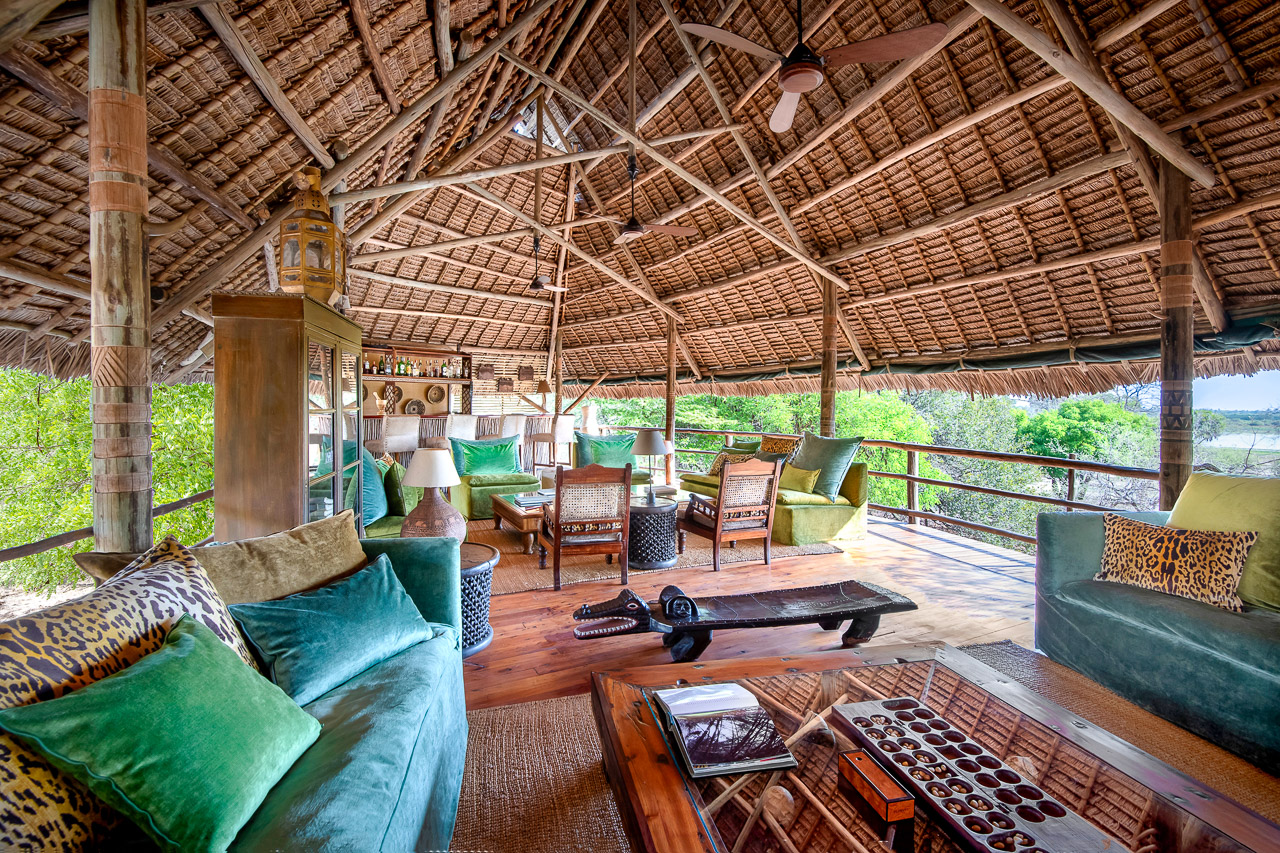
Accommodation Siwandu Camp comprises two logistically separated camps: North Camp with six tents and South Camp with seven tents. The rooms are all identical, only the main buildings differ.
The tents sit nestled beneath shade-giving trees atop low platforms built slightly back from the shore of Lake Nzerakera. Each spacious, octagonal tent is equipped with a double bed, ceiling fan, en-suite bathroom, outdoor shower and spacious deck to the front and rear. A large thatched roof covers the whole, providing shade from the sun and protection from the rain. A small, pretty desk and several chairs and tables are set out upon the veranda. The rooms are all very spacious, romantic and built to exacting standards.
South Camp
South Camp's lounge and dining room are raised upon stilts and offer fantastic views of the lake. Meals are served individually. A large swimming pool can be found close to reception.
North Camp
The main building at North Camp is built at ground level (including swimming pool) with the intention of appearing smaller and more intimate. North Camp is ideal for families or groups and may also be booked privately.
The park comprises 75% miombo woodland, but most noticeable are the many wonderful palms, particularly the borassus and doum palms, as well as the many candelabra trees (euphorbia candelabrum).
Nyerere National Park is accessed by light aircraft from Dar Es Salaam and can be seamlessly combined with a trip to Ruaha National Park. The flight to Ruaha National Park takes approx. 1 hr 30 minutes; the flight to Dar Es Salaam takes approx. 35 minutes.
Siwandu Camp is situated on the banks of Lake Nzerakera. The drive from Mtemere Airstrip takes approx. 45 minutes.
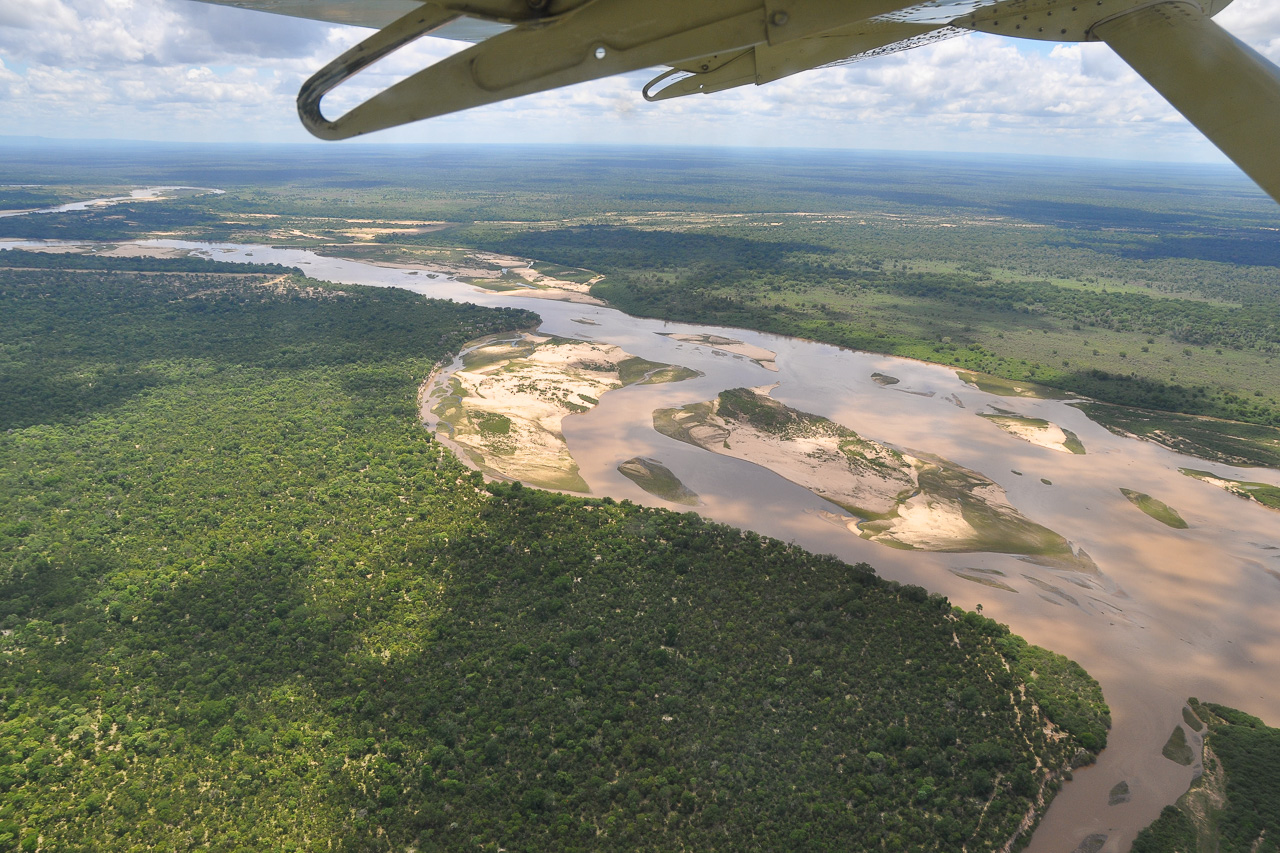
At 600 km long, the Rufiji River is the longest river in East Africa and source of the park’s lifeblood. The branched river system includes five large lagoons, which are (from west to east) Lake Tagalala, Lake Manze, Lake Nzerakera, Lake Siwandu and Lake Mzizimia.
The park comprises 75% mixed miombo forest, but also supports a striking number of beautiful palms, including the borassus and doum palms, and many candelabra trees (Euphorbia candelabrum). The Rufiji River is the park’s lifeblood: the river system, the marshes, canals and lagoons attract all kinds of animals, including crocodile, hippo, buffalo, elephant, lion and antelope. Hyena, leopard and wild dog can also be seen here.
The park has its former name from the British big game hunter Frederick Courtney Selous, who was killed on the banks of the Beho Beho River on January 4, 1917 during a skirmish with German troops under General Paul von Lettow-Vorbeck. It is possible to visit his grave, which is located close to the Beho Beho Camp.
The new name was chosen in honor of Tanzania's founder and first president, Mwalimu Julius Kambarage Nyerere. Nyerere led the nation through independence and remained president of the young republic until 1985. He is revered as the father of the nation.
The park is home to several beautiful lodges, where in addition to game drives, guests can also enjoy boat trips and bush walking. Boat trips take place on the lakes or canals, or as at Sands Rivers Camp, on the main river itself. Distances within the park are immense and the roads very bumpy, but the scenery is stunning. The park is situated some 500 m above sea level and gets very hot between November and February. During this time of the year occasionals rain storms will occur, mostly in the afternoons. Best time of travel is from June to October.
Nyerere National Park is easy to combine with a trip to Ruaha National Park, which is a one hours’ flight away – as is Dar es Salaam.

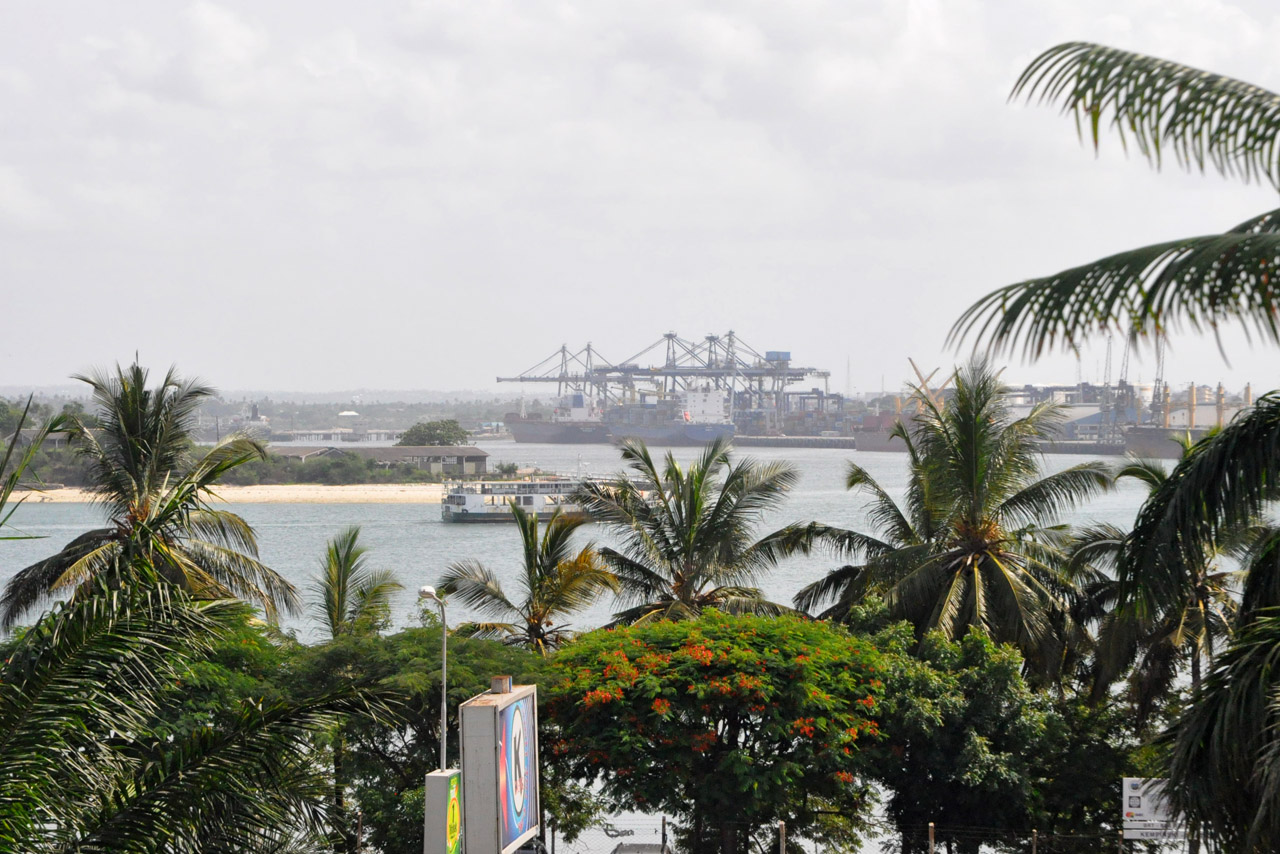
Basic Information
Individual journey. The journey will be planned on your preferred dates.
Duration 7 nights. Min 2 guests. Trip vice versa possible. Weight limit of luggage 20 kg. Luggage in one soft bag only.
Includes all transfers from Dar-Es-Salam to the hotels/camps to Dar-Es-Salam
- Jongomero Camp: Standard Room. All meals, drinks (except premier brands), laundry service, private vehicle / guide provided by the lodge.
- Siwandu Camp: Standard Room. All meals, drinks (except premier brands), laundry service, private vehicle / guide provided by the lodge.
Learn more about these areas









